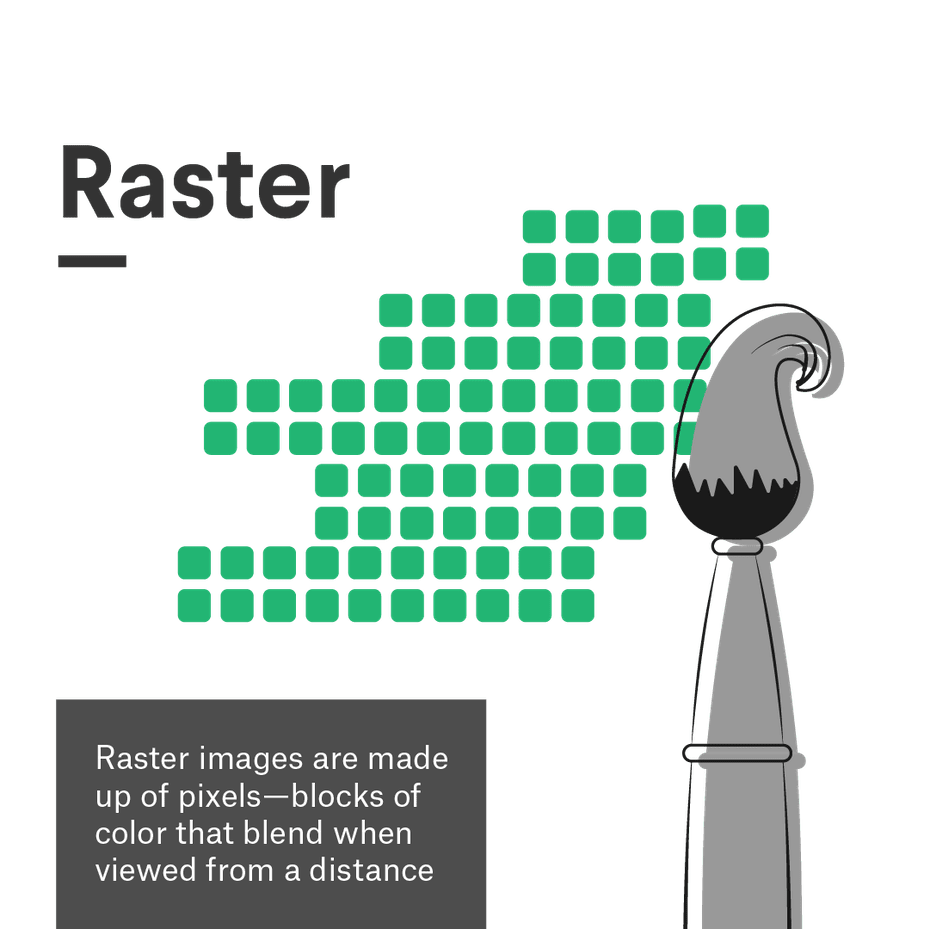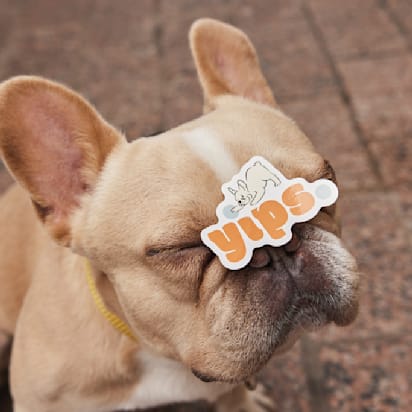For all the time, thought, research and iteration that goes into creating a logo design, it is rarely a one-time process. Editing a logo is something most brand owners will have to deal with at some point. Even after your designer has delivered a standout design, you’ll likely find yourself needing to know how to edit a logo from time to time.
For example, you might find that you need to add a new tagline. Or, that you need additional alternate color versions for any number of reasons. Your brand is a living thing. So the contexts to which your logo will need to adapt will always be changing.
The good news is that there are plenty of edits that are simple enough for anyone to make. That’s the case, regardless of your skill or experience level with design software. In this article, we’re going to walk you through some questions to consider before editing a logo. We’ll also discuss the most common edits you can make and the steps you need to take to edit a logo, using the 99designs by Vista logo as an example.
Things to think about before you edit a logo
Decide why you need to edit your logo
Editing a logo, especially if you are not a designer, is a decision you should think through. If, for example, you are generally unsatisfied with the result you received, it’s unlikely that a metaphorical new coat of paint will turn things around. On the other hand, specified issues and clear goals for your edit will make the difference between whether you can manage these changes yourself or whether it is best to bring in a designer.

First, check out our guide on how to evaluate logo quality to better understand what makes a good logo. Having considered the scope of edits, if you’re editing a logo, you’ll want to make sure your logo’s issues have clear aesthetic solutions. For example, if your font currently feels too old-fashioned, you may only need to replace it with a modern one. If your logo does not feel personable, a warmer color scheme may brighten things up.
Even after you’ve gone through the process of editing your logo, you can return to this step to make sure your edit has solved the problem. A great technique is A/B testing. With this, you can try out different variations of your logo on different audience segments to understand which version people prefer.
Determine how complex your logo edit will be
At this point, you should have some ideas of what needs to change. The question now is how long or complicated that list is.


For the purposes of this article, we’ll be focusing on minor changes that anyone can make themselves, such as editing the size or color. A major change would be something more along the lines of a logo redesign, such as introducing entirely new graphical elements into your logo. In this case, hiring a professional to redesign your logo is best.
Make sure you are working with an editable logo file type
Logos are ideally stored in vector file types such as AI or EPS. You can access these files through logo design software such as Adobe Illustrator (which we’ll be using in this article, though most alternative vector programs work in a similar way).
Vector files are much easier to edit than raster files: they can scale infinitely, their shapes are simplified to points and lines, and each shape is automatically separated into its own layer via the Layers panel. Conversely, raster graphics are based on pixels—tiny colored squares that make up an image. This makes them largely set in stone. Much like an illustration, the only way to edit them is to erase or paint over them
What if you don’t have a vector file of the logo you want to edit?
If all you have is a raster image of your logo, you’ll need to vectorize it in order to edit the logo. If you’re not familiar with graphic design software, you may want to consider having a designer vectorize your logo for you before making any other changes.
Illustrator does have an “Image Trace” function that automatically generates a vector version (this process of converting a raster image to vector is described here). Whether or not “Image Trace” will work for you depends on the image you’re working with. It’ll also depend on the look you’re going for. However, the most reliable way to get a good vector file is to trace over it by hand inside of a vector program.


Before you edit a logo, save a copy of your original
Finally, assuming you are ready to move forward with editing your logo, make sure that you duplicate and save a copy of your original logo file. While this might seem like common sense, it is an easy step to forget.
This is useful for a before/after comparison, of course. But, importantly, you’ll need a backup in case your first (or second or third) attempt at a logo edit does not go according to plan.
How to edit a logo design’s size and position
Editing the size, position, or scale of your logo are all (fortunately!) some of the easiest edits you can make on your own. In Illustrator, the Selection Tool in the toolbar allows you to select and reposition your logo as needed. Top tip: hovering over icons reveals their label! If your logo is not grouped (meaning you can only select one shape at a time), you can use the Selection Tool to drag a box around and select the entire logo. When a shape is selected, you can delete it by simply hitting the delete key.
The Rotate Tool allows you to rotate the logo up or down by degrees. Double clicking the Rotate Tool (and most tools) in the toolbar will bring up an Options window. This allows you to enter more precise increments—for example, if you want to rotate your logo by a specific number of degrees.

Adjusting the scale can be a bit trickier, depending on the format of your logo. If you are working with a vector program, it is as easy as selecting the logo and dragging the corner of the bounding box to scale up or down (hold Shift to constrain proportions scale length and width equally, and hold Options to scale from the center).
If you are working with a raster file in a program like Photoshop, you can navigate to Image > Image Size to upscale or downscale the logo. The only way to change the size of a raster file is to add or remove pixels. This is something the computer automates as it cannot understand how an image is supposed to look in the same way that humans can. But this almost inevitably results in a reduction in quality, which is why vector files are a much more practical option for editing a logo.
How to edit logo colors
Editing logo colors may seem less intuitive for newcomers to design software. Like most things on computers, colors are represented by numerical values. On the plus side, this allows for more accurate color selections, but to make matters even more confusing, there are multiple different value systems describing color: HEX, HSB, RGB and CMYK.
Illustrator also divides shapes and their associated colors in two ways: strokes and fills. The stroke is the path or outline that creates the shape and the fill is the space inside of the stroke. Each of these can have a color applied or be blank. They are represented towards the bottom of the tool bar in a pair of overlapping squares: the hollow square is the stroke and the solid square is the fill.

In order to find what color values your logo is currently at, select one of your shapes. Then, double click either the stroke or fill icon (note: if one of these icons is white with a red diagonal mark across it, this means there is no color applied). This will open up the Color Picker window. Here, you’ll see the color as represented by each of the different value systems.
Changing the value on any one of these will change the color overall. If you need to create a black or white version of your logo, you can change the six digit HEX code (the text box labeled with the # sign towards the bottom) to all 0s for black or all Fs for white.
Alternatively, you will also notice a graphic color mixer on the left side of the Color Picker. You can choose a color here by dragging the vertical slider to your desired base hue and clicking within the square box labeled Select Color: for the saturation and brightness.
With that said, you should ideally know the specific color that you want to use on your logo. Make sure you’ve studied up on color theory and have spent some time researching color schemes online with a tool like Adobe Color.

Convert the color mode of your document by navigating to Edit > Edit Colors
If you need to edit the color mode to CMYK for printing or RGB for digital display, you do so by selecting your logo, navigating to Edit > Edit Colors > Convert to CMYK (or RGB as the case may be). Before finalizing your color, it is a good idea to have a CMYK version professionally printed. This will help make sure your color choices still work offscreen.
How to edit logo text
To edit the text of a logo, you will first need the name of the font used (assuming you are sticking with the same one). If you cannot find out what font was used, you can try using a font matching service like WhatTheFont to find a similar one.
Simply download the font and install onto your computer (the font’s website may require you to purchase a license in order to do so). It’s a pretty straightforward process but please note that you may need to restart Illustrator before the font will show up.
Typically the designer will have outlined the text of your logo, which basically means that it is converted from an editable font to a static shape. The reason for this is to ensure consistency: if your computer does not contain the same font the designer used, Illustrator will replace it with a different one. What all this means is that in order to edit the text, you will have to select and delete it and type in your new text.
Anytime you are adding text, such as a tagline, make sure you review type design standards and pay attention to elements like spacing and alignment. Once you’re finished, you should outline the font by navigating to Type > Create Outlines.

If the designer of your original logo did not use a font and created the text by hand, you really have two options: you can replace it with a font that is close enough (WhatTheFont will suggest similar fonts when you upload a screenshot) or you can work with a type designer, since the only real way to edit an original typeface is by creating new letterforms from scratch.
How to edit a logo’s shape
Editing the shape of a logo requires a bit more advanced knowledge of how vector programs work. Vector shapes essentially come down to points and lines (called Anchor Points and Paths in Illustrator). When you click on a shape using the Direct Selection Tool, you will see these points revealed, and this tool will also allow you to adjust the position of each point individually.

In Adobe Illustrator, shapes are made up of points and connecting lines
Click on one of the anchor points attached to a curved line to see two handles stretching out from it (called bezier handles). Dragging either one of these handles adjusts the curvature of the line on either side of the anchor point.
To add bezier handles to a corner point, select it and choose the icon labeled Convert selected anchor points to smooth. You can find this in the panel in the upper left of the interface. The icon next to it, labeled Convert selected anchor points to corners eliminates the curve.
To add a point, press the + key on your keyboard which will bring up the Add Anchor Point Tool. The – key to bring up the Delete Anchor Point Tool.

The handles attached to anchor points allow you to adjust the curvature of a line
Worth noting are the Pathfinder tools, which you can view by navigating to Window > Pathfinder. This is an advanced Illustrator topic, but there are some basic functions you may need for creating and editing compound shapes.
Unite combines two separate shapes, Minus Front subtracts the shape on top, and Minus Back subtracts the shape on the bottom (you’ll find the order of your shapes in the Layers panel).

Bring up the Pathfinder window via Window > Pathfinder
Ultimately, the specific steps you’ll need to edit the shape of your logo depends on what you’re trying to achieve. In a general sense, these are still the essential tools that you will need.
In most cases, it is probably best to go ahead and work with a designer as it can be tricky to get natural looking results if you’ve never used design software before. Vector logos are essentially built on math. While Illustrator hides most of that from you in a simplified graphical interface, beginners often find working with shapes in this way a lot to wrap their heads around.
Always edit a logo design with care
You can’t always strike gold on your first pass at a logo design. However, the beauty of the digital age is that almost nothing is set in stone. And the way design software has been streamlined, most logo edits are not terribly difficult to make. At the same time, even a simple-looking design can be more complex than it appears. Take the time to learn how to design a logo and the key principles of logo design, to ensure you create a logo that looks balance and stunning.
Need some inspiration? Read our article to ways to find logo inspiration and come up with great logo ideas.
This article was originally published in 2021. It has been updated with new examples and information.
Author: Johnny Levanier




